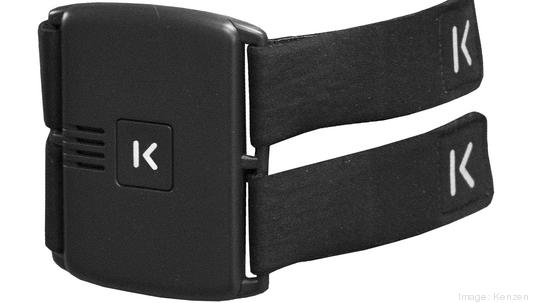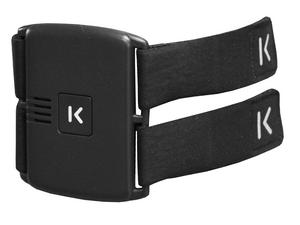
With its latest set of new features, Kenzen is using analytics that give companies a broader view of worker safety.
The company, which has a dual headquarters in New York and Kansas City, developed a real-time physiological monitoring platform to keep workforces safe from heat, fatigue and overexertion on the job.
In addition to tracking heart rate, activity and micro-climate temperature (the temperature between one's skin and clothing) to predict core body temperature, the company now can track heat susceptibility and sweat rate of individual employees. Both features tie into dehydration, which can exacerbate heat-related injury and the fatality risk of workers in hot environments.

Hydration isn’t one size fits all, Kenzen Chief Commercial Officer Heidi Lehmann told the Kansas City Business Journal. That’s why knowing a person's sweat rate is key. Kenzen’s device is worn on the upper arm and can calculate and predict sweat rate to make individualized recommendations on how much water to drink throughout the day to stay safe. It’s accurate within one cup of water.
For heat susceptibility, Kenzen uses a proprietary algorithm to determine heat risk and looks at medical and physical conditions, physical fitness, age and history of heat injury and illness. Each employee is classified as low, moderate or high heat-risk, but personal information and reasons for being in a particular category are kept private.
Employers and onsite managers can track the data and receive alerts.
With Kenzen’s breadth of data and larger scale deployments at work sites, it’s now on its way to becoming a data analytics company instead of only a hardware and device company, Lehmann said. It resonates with prospective investors, but it also adds value for employers wanting to keep their workforces safer and more productive.
Kenzen’s data can help employers be proactive with keeping employees safe, such as knowing how much water to bring to a worksite or which employees should work together based on their heat susceptibility and other factors.
“It gives managers the heads-up to watch certain workers more closely, and maybe even give those workers extra breaks or change their work shifts on really hot days to avoid injury and illness,” she said.
Employers can use the dashboard to track trends across worksites, including down to specific roles, such as carpenters. One employer, for example, was surprised to learn that it received the most heat alerts at a Colorado work site in the morning. Another employer in Japan learned that its cooling vests for employees didn’t lower core body temperatures and instead contributed to more heat alerts compared with employees who didn’t wear one. Because the employees felt cool, they didn’t slow down when they needed to, she said.
Kenzen’s offering is resonating with companies in industries such as construction, mining, manufacturing and renewable energy. The company recently signed its first corporate contract – a multi-year, multi-site deal with a construction company in Japan. Lehmann thinks at least two to three other companies will follow suit this year.
Last year, Kenzen secured smaller deployments involving 10 to 20 employees at individual companies. Now, it’s landing contracts with companies for 20 to 200 employees. By 2022, Lehmann expects that range to go as high as 2,000 workers.





